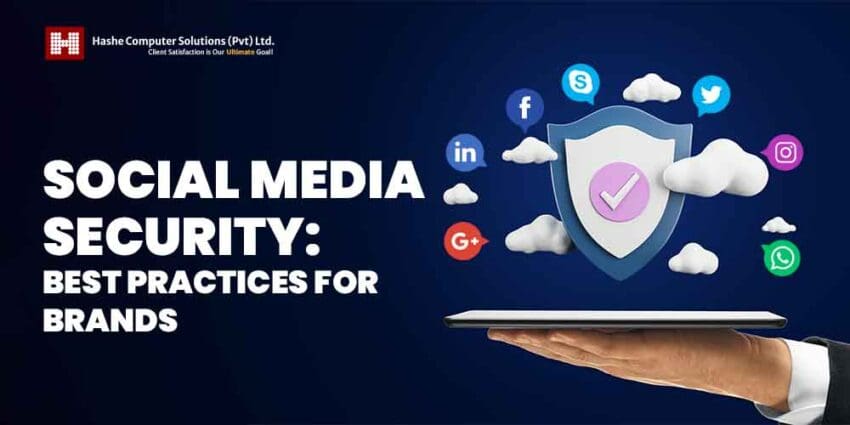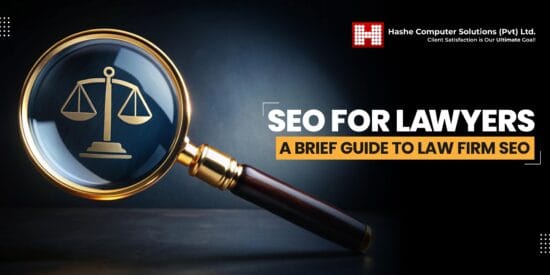
The world of social media is dynamic, ever-changing, and full of fun opportunities for sharing and connecting for individuals and businesses. However, as in any vibrant environment, being aware of your security is crucial.
The Internet can be a dangerous environment, full of hidden cyber threats. As a result, we must take precautions to protect our safety and privacy in the real world and be attentive to our online spaces.
But fear not—here is a helpful guide to assist you with navigating the shifting world of social media with ease. In this article, we’ll look at the best practices in social media security that will keep you safe while you go about your daily social media activities.
What is social media security?
Social media security involves procedures and policies applied to protect individuals, businesses, and their data from the myriad threats and risks associated with accessing social media platforms.
These practices protect your social media account, information, and privacy, offering security against phishing scams, malware, data breaches, identity theft, illegal access, and online harassment.
Users can have a safer online experience and considerably reduce their likelihood of becoming a target of cyberattacks by putting the proper security measures in place.
What are the most common social media security risks?
Social media platforms offer numerous advantages and connectivity options, but they also pose a little threat to security. Understanding these risks is critical for individuals and organizations seeking to minimize potential risks. The following are a few of the most typical social security threats.
Phishing scams
Imagine being tricked into disclosing your password by someone posing as your bank. That’s known as phishing, and it frequently occurs on social media. Even if a message or link appears to be from someone you know, proceed with caution.
Identity thefts
If you post too much personal information online, identity thieves may find you. They could create false accounts, steal money, or cause trouble using your information.
Malware attacks
Consider malware to be little digital viruses. They can spread via social media by lurking in attachments or links. Tapping on them may cause malware to infiltrate your device and steal your info. Do not click on anything that appears suspicious.
Account hijacking
It happens when a social media thief gains control of your account. They can then send spam, defraud your friends, or create a mess. Choose secure passwords, and be careful while disclosing your login credentials.
Data breaches
A data breach may expose your personal information and put you at risk. Use caution while disclosing information on social media.
Fake accounts
People can propagate false information, con others, and harm reputations by using fake profiles. Pay attention to who you communicate with online.
Violating privacy
Social media sites can gather more personal data about you than you think. Someone can sell this data to other businesses or use it for advertising. Ensure you tweak your privacy settings to limit the information you disclose.
Cyberbullying
Negativity can thrive in social media environments. Bullies can utilize it to harass and target others, causing them mental harm. Report cyberbullying, and don’t be hesitant to ask for assistance if you witness or encounter it.
Misinformation
Fake news spreads quickly online, including social media. Be skeptical of the information you encounter, and don’t share anything you can’t validate.
Third-party app risks
Third-party apps such as games can request more information than necessary. Ensure you only connect to trusted third-party apps and exercise caution when granting permissions to them.
Why is social media security important for businesses?
Let’s see why social media security is crucial for brands.
Safeguarding brand reputation
Maintaining audience trust and credibility requires protecting sensitive data, such as private client information, intellectual property, and confidential business information. Any unauthorized activity on social media platforms or security breaches could damage a company’s reputation.
Protecting against data breaches and identity theft
Brands frequently gather and keep user data, including names, email addresses, and even financial information. Robust safety measures reduce the likelihood of identity theft for both the brand and its customers since they protect all sensitive user data from hackers and potential breaches.
Lowering the risk of social engineering attacks
Attackers may pose as brand representatives or create phony accounts to deceive gullible people into disclosing confidential information or engaging in harmful behavior. Implementing effective security practices helps make your brand less susceptible to these social engineering frauds.
Maintaining Customer Engagement
Social media channels play a crucial role in the communication between consumers and brands. Furthermore, if your account is hacked, it may negatively affect or disrupt your customers’ participation, which could lower customer satisfaction and loyalty.
Business Continuity
If security breaches cause your social media account to be hacked or suspended, it will undoubtedly negatively impact your company’s ability to continue operating. It could negatively affect your marketing activities, customer support programs, and general brand visibility.
Social media security best practices
1. Create a strong password.
Creating strong and unique passwords is a primary step toward safeguarding your social media accounts. Avoid using popular terms or easily guessed passwords, such as birthdays or pet names.
Use intricate combinations of letters, numbers, and special characters. Consider utilizing a trustworthy password manager to create and store passwords securely.
You should update passwords regularly and avoid using the same password on several platforms.
2. Enable two-factor authentication.
Two-factor authentication (2FA) increases security by asking users to provide a second verification besides their password, such as a specific code texted to their cell phone. This method significantly minimizes the chance of unwanted access, even if the initial credentials have been breached.
Facebook and X both offer two-factor authentication. Once activated, you will receive a unique code on your mobile device that you must enter to complete the login process anytime someone attempts to log in to your account from a new device.
3. Train staff members on security awareness.
Companies can prevent security breaches by providing regular training and updates on emerging security concerns. They should schedule frequent training sessions to teach staff members about the potential risks associated with social media and how to spot and respond to possible threats.
Employees should be able to recognize phishing attempts, suspicious websites, and social engineering techniques. Brands should also set guidelines for utilizing social media, maintaining passwords, and safeguarding data.
Follow reputable blogs and websites regarding cybersecurity and the instructions on the official social media accounts of the platforms to stay updated on security advancements and best practices.
4. Restrict access rights.
Businesses should control access by allowing only authorized staff to view social media profiles. Ensure that only employees who require access to specific accounts and functions for their tasks have administrator rights. Access rights must be verified and changed frequently to maintain control over account security.
5. Track and assess account activity.
Consistent monitoring of social media accounts is necessary to spot any suspicious activity or illegal access. Before publishing content, brands should create a method for content approval and review.
Maintain a log of all logins, social media posting schedules, and changes to account configuration. Additionally, ensure you quickly address any issues with security or unauthorized access.
6. Use third-party apps with caution.
Examine third-party apps’ security protocols and reputation before adding them to your social media profiles. Concentrate on the permissions given to these apps since they could provide access to confidential data that they shouldn’t be privy to. Regularly review permissions and disable them for unnecessary apps.
7. Protect mobile devices.
With the growing use of mobile devices for social media management, it is crucial to take safeguards to ensure their safety. Verify whether biometric or secure password authentication is enabled on these devices. Regular software and operating system updates are necessary to address security vulnerabilities, and any data saved on your devices should be protected.
8. Regularly update and patch software.
Attackers might exploit outdated software, putting your social media accounts at risk. Installing the most recent security fixes and upgrades on all social media management platforms and apps is recommended. Regular vulnerability checks and timely patch implementation are critical tasks for brands.
9. Look out for free Wi-Fi.
Brand personnel should avoid connecting to public Wi-Fi networks to check their social media accounts. That’s because it is easier for hackers to steal data on public Wi-Fi networks. After all, these hotspots are typically vulnerable.
Use a private, secure internet connection with a strong password or a reliable, dedicated Wi-Fi network.
10. Regularly update your privacy settings.
Social media platforms frequently update their privacy settings and accessible security options. Brands should be aware of these changes and utilize the available tools to limit who may see their postings, contact them, and access their personal information. Evaluate and modify privacy settings frequently to control your brand’s online visibility.
Wrapping Up!
Brands must emphasize security when leveraging social media’s potential to protect their online reputation and audiences’ trust. They may lower cyberattack risks and improve social media security by implementing the aforementioned best practices.
Social media security is a perpetual effort, and ensuring a strong defense against potential threats necessitates brands remaining attentive, updated on security policies, and well-equipped with qualified personnel.
Are you looking for the best IT providers for your IT projects? Look no further than Hashe! Hashe Computer Solutions is a leading IT solutions provider that offers world-class software, mobile application, web development, and digital marketing services. Contact us for the best web design solutions!
Keep following us for more tech news!
Check out our Social Media Pages:
- Facebook: https://www.facebook.com/hasheCS/
- Instagram: @hashe_official
- LinkedIn: https://pk.linkedin.com/company/hashe-computer-solutions
- Twitter: https://twitter.com/hashe
- Youtube: https://www.youtube.com/channel/UCay7eQtwoQ3ehoIesAxHDPw
- Pinterest: https://www.pinterest.com/hashecs/
- Threads: https://www.threads.net/@hashe_official
- Behance: https://www.behance.net/hashecs
Was this helpful?
Last Modified: September 10, 2024 at 7:16 am
58 views















